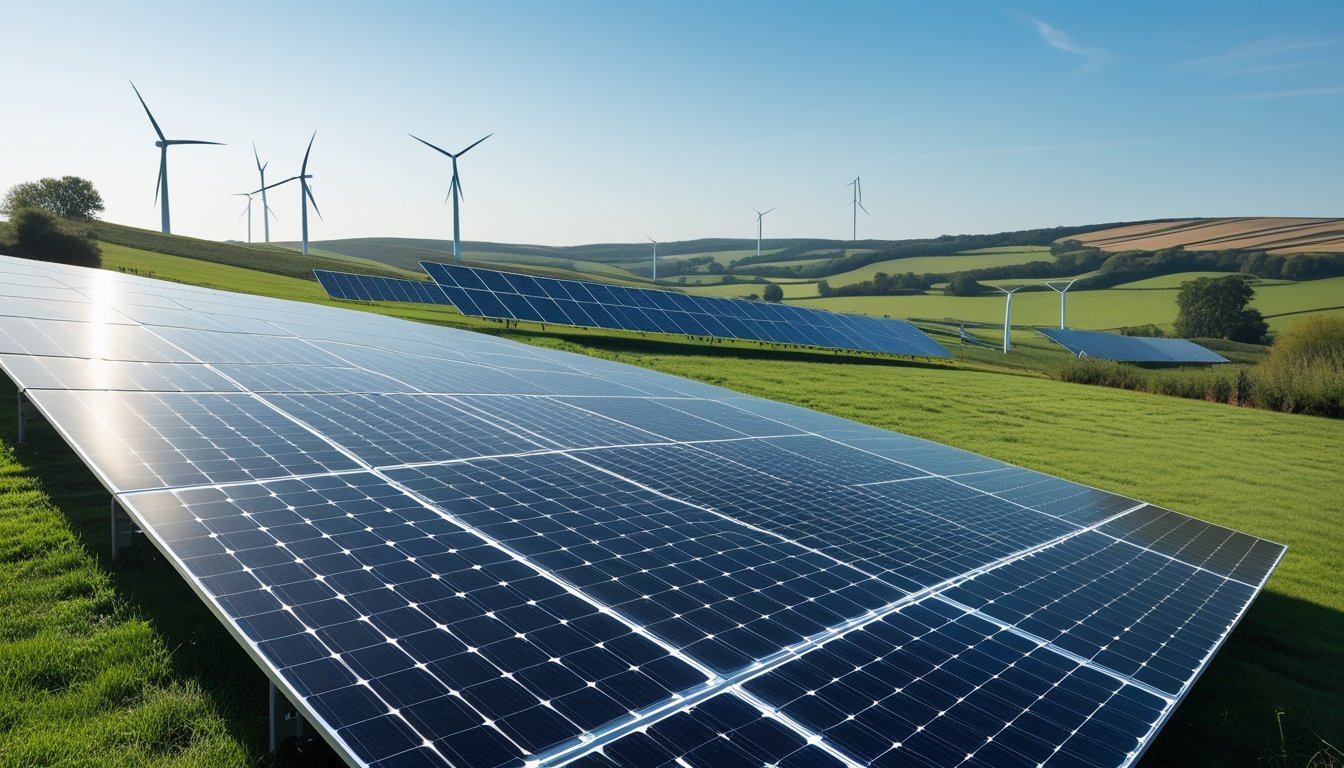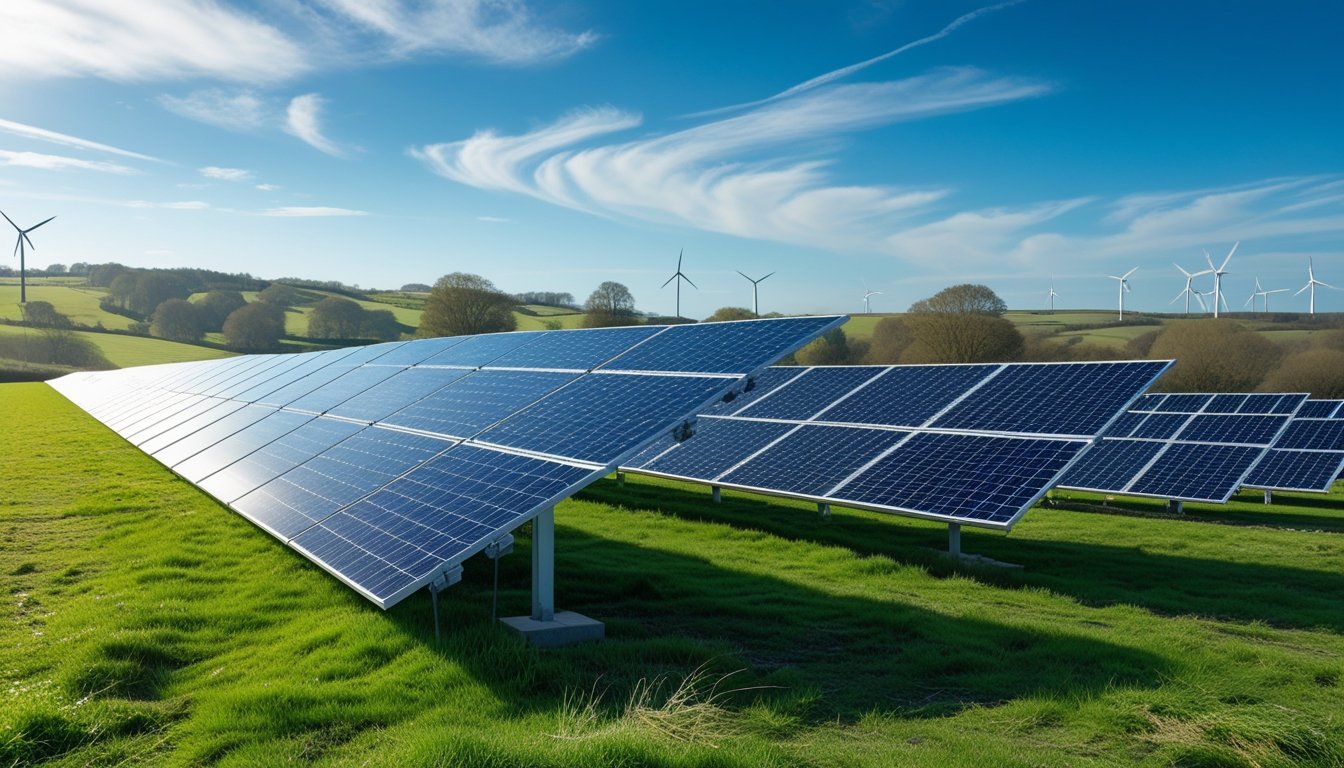Late updated: 03 Jun 2025 08:06
Written by: Eleanor Hartman
The Role Of Solar Farms In UK's Energy Future: Paving the Way for Sustainable Growth
Solar farms play a vital role in shaping the energy landscape of the UK, providing a clean and efficient alternative to fossil fuels. With advancements in technology and increased investment in renewable energy, solar farms have become an integral part of the UK’s strategy to combat climate change. By harnessing the abundant power of the sun, solar farms are helping the UK move towards a sustainable energy future.

The impact of solar farms transcends mere energy production. They offer opportunities for agricultural diversification by allowing farmers to integrate photovoltaic panels into their lands. This blend of energy production and agriculture not only boosts the local economy but also supports biodiversity, as solar farms with diverse habitats can nurture more wildlife than conventional farmland.
While solar farms present clear advantages, there are challenges to their expansion, such as land availability and initial cost. It is crucial for us to address these issues through strategic planning and community engagement to ensure that solar power continues to grow and contribute significantly to our energy needs.
Key Takeaways
- Solar farms are central to the UK's renewable energy goals.
- Opportunities exist for agricultural collaboration with solar projects.
- Addressing challenges is vital for the future expansion of solar energy.
Solar Farms as a Cornerstone of the UK’s Renewable Energy Strategy
Our focus is on the integration of solar farms into the UK's energy framework and their key role in reducing reliance on non-renewable resources. This analysis includes current contributions of solar power, synergies with other renewable sources, and government policies incentivising solar farm expansion.
Current Contribution of Solar Energy to the National Grid
Solar farms significantly bolster the UK's energy mix by providing locally-sourced electricity. As of 2025, solar energy makes up a substantial portion of our renewable energy capacity. The widespread development of large-scale solar installations has helped in steadily increasing solar's share in the national grid.
The cost-effectiveness of solar technology contributes to its attractiveness, offering a robust alternative to fossil fuels. By reducing carbon emissions, these farms are crucial to our commitment to sustainable energy solutions. The capacity generated by solar farms has been growing, further stabilising our energy supply and ensuring energy security.
Integration with Other Renewable Energy Sources
Solar farms operate alongside wind and hydropower facilities, creating a diversified energy portfolio. This integration maximises efficiency and reliability by compensating for seasonal or daily variations in solar and wind availability. During peak sunlight months, solar farms take the lead in generation, while wind power complements output during other periods.
Through advanced energy storage systems, surplus electricity can be stored for later use. This coordination allows us to make full use of renewable resources, reducing the dependency on traditional energy sources. The synergy among different renewable technologies is a testament to the nation's strategic planning in tackling climate challenges.
Government Policy and Incentives Impacting Solar Farms
The UK government's role is pivotal in promoting solar energy advancement. Policies such as subsidies and tax incentives have accelerated the growth of solar farms. Recent approvals for solar projects underline our dedication to meeting renewable energy targets.
Feed-in tariffs and contracts for difference provide financial stability to solar farm investors, encouraging further investments. These incentives lower the financial barriers, making solar projects attractive to both public and private investors. Government strategies are designed to reinforce solar energy as a major component in our transition to a clean energy future.
Opportunities and Challenges for the Expansion of Solar Farms

In the UK, solar farms are pivotal in our transition to sustainable energy. However, growth in this sector entails both challenges and opportunities. These revolve around advancements in technology, land utilisation, grid improvements, and environmental considerations.
Technological Innovations Enhancing Solar Efficiency
Technological improvements play a crucial role in the expansion of solar farms. Emerging technologies such as bifacial solar panels and solar tracking systems significantly improve energy capture efficiency. Bifacial panels can harness sunlight from both sides, thereby capturing more solar energy throughout the day. Solar tracking systems adjust panel positioning, optimising energy absorption as the sun moves. Innovative solutions such as these demonstrate the potential for increased output from existing land, making solar farms a more viable option without necessitating more land.
Additionally, developments in photovoltaic materials promise higher efficiency rates and reduced costs. These advancements not only enhance performance but also broaden the scope of solar installations in various geographic regions across the UK. With continuous research and development, we see the possibility of even greater gains in efficiency and cost-effectiveness.
Land Use Considerations and Planning Regulations
The expansion of solar farms faces challenges related to land use. Solar farms require substantial space which can conflict with other land uses like agriculture and housing. Balancing these demands necessitates careful planning and regulations playing a vital role in managing land allocation. Steps must be taken to ensure efficient use of space while preserving agriculture and natural habitats.
The UK government’s policies on land use incorporate these challenges, facilitating balanced growth between solar development and other critical land functions. By prioritising less productive lands or brownfield sites, we can minimise the impact on valuable agricultural zones. Ensuring community involvement in these planning processes fosters greater acceptance and cooperation, paving the way for effective deployment.
Grid Infrastructure and Energy Storage Solutions
Integrating solar farms into the national grid presents another challenge and opportunity. The UK's grid requires updates to accommodate fluctuating solar energy inputs. Advanced grid infrastructure, including smart grid technology, supports efficient energy distribution and enhances system resilience. Energy storage solutions are equally important. As solar energy is intermittent, battery storage systems ensure a reliable supply, enabling us to use stored solar power during periods of low sunlight or peak demand.
Investments in battery technologies, such as lithium-ion and emerging alternatives like flow batteries, are vital for energy stability. These systems help smooth out the variability in solar energy production, making solar farms more reliable contributors to our energy grid.
Environmental and Societal Impacts
Solar farms contribute positively to reducing carbon emissions but also come with environmental and societal considerations. Construction can affect local ecosystems, while changes in land use may alter wildlife habitats. Mitigating these impacts requires diligent planning and environmental assessments. Integrating wildlife corridors and ensuring biodiversity-friendly designs can help minimise ecological effects.
From a societal perspective, solar farms offer job opportunities in construction, maintenance, and technical development. Engaging the local community early and maintaining transparency about development plans can boost public support and reduce opposition. Public education about the benefits of solar farms for reducing the carbon footprint helps in fostering widespread community acceptance and support.
Frequently Asked Questions

In this section, we address several common inquiries regarding the impact and future of solar farms in the UK's energy landscape. Each topic provides insight into how solar farms contribute to the nation's renewable energy strategy and their broader implications.
How will solar farms contribute to the United Kingdom's renewable energy targets?
Solar farms are instrumental in helping the UK achieve its ambitious renewable energy goals. By harnessing the sun's power, they provide a sustainable energy solution that aids in reducing carbon emissions. Their operation moves us further toward the Net Zero carbon emission targets set by the government.
What incentives are in place to promote the development of solar farms across the UK?
Several incentives exist to foster solar farm development. These include government-backed schemes and subsidies that reduce financial barriers. Tax breaks and grants are also available to encourage investment, making solar energy an attractive option for developers and landowners alike.
How do solar farms impact the biodiversity and landscapes in the UK?
While solar farms require significant land, their impact on biodiversity can be managed. They often co-exist with agriculture and can enhance local habitats if managed correctly. Measures such as installing wildflower meadows and maintaining hedges help promote biodiversity on these sites.
What technological advancements are expected to enhance the efficiency of UK solar farms?
Ongoing innovations play a key role in the efficiency of solar farms. This includes improvements in photovoltaic panel technology, energy storage systems, and grid management solutions. These advances are expected to boost productivity and make solar energy a more competitive and reliable resource.
How does the UK government plan to integrate solar farms within the national grid?
The integration of solar farms into the national grid is carefully planned. The government is developing infrastructure to handle fluctuating energy outputs. By investing in smarter grid technologies, we expect more seamless incorporation of solar power, maintaining a stable energy supply.
What are the economic implications of expanding solar farm operations in the UK?
Expanding solar farm operations brings significant economic benefits. It creates jobs, stimulates local economies, and reduces reliance on fossil fuels, potentially lowering energy costs. Furthermore, solar farm investments contribute to a durable energy infrastructure, strengthening national energy security.